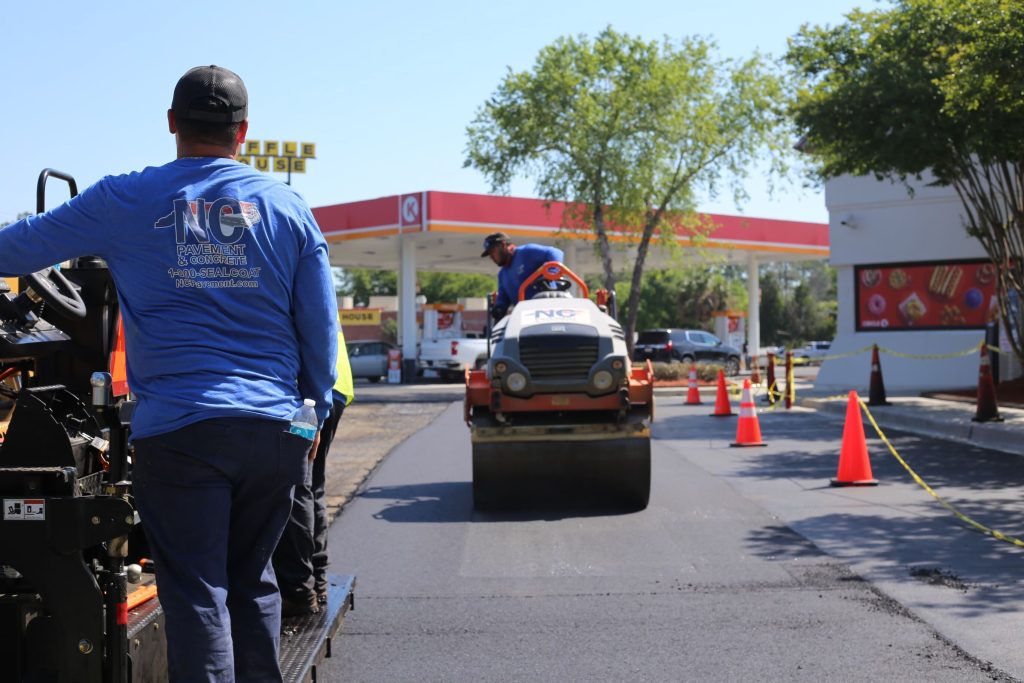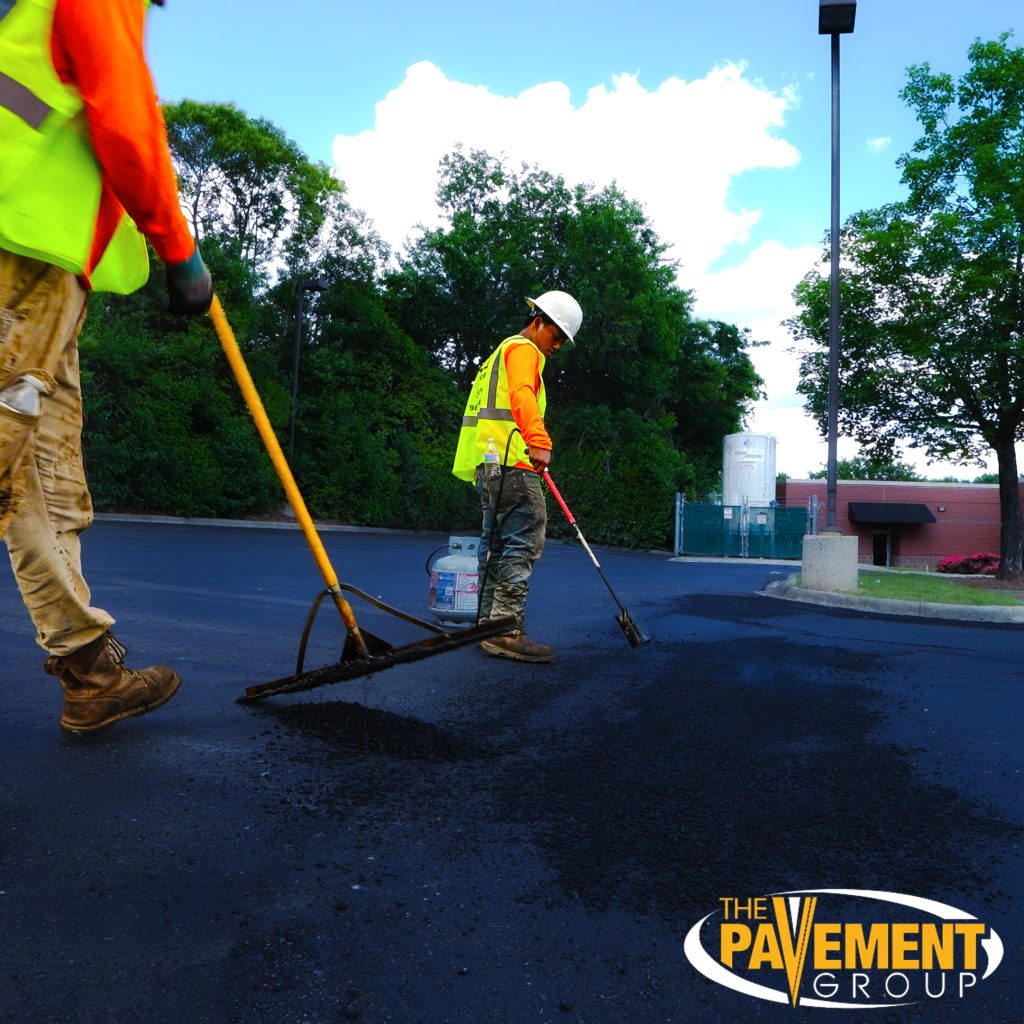When it comes to maintaining commercial asphalt surfaces, property managers and business owners are often faced with a critical decision: standard overlay or mill & overlay? Both methods can restore the look and function of your pavement, but they serve different purposes and come with different long-term benefits.
In this guide, we’ll break down the key differences between these two paving options, when each is appropriate, and how to determine the best fit for your commercial property.
What Is a Standard Commercial Asphalt Overlay?
A standard overlay is the process of installing a new layer of asphalt—typically 1.5″ to 2″ thick—directly over the existing surface without removing any material. It’s essentially a “facelift” for your pavement.
When to Use a Standard Overlay
- Your current surface is in fair condition
- Minor surface-level cracking and wear
- No major drainage issues
- The base layer is structurally sound
Standard overlays are a cost-effective, fast solution for extending the life of a commercial lot or roadway. However, because the existing surface isn’t removed, any underlying issues may continue to affect the new surface.
What Is a Commercial Mill & Overlay?
A mill & overlay involves removing (or milling) the top layer of damaged asphalt before laying down a fresh overlay. This process allows for a more even surface and better bonding between the old and new asphalt.
When to Use a Mill & Overlay
- Visible damage like rutting, fatigue cracking, or potholes
- Uneven grading or drainage problems
- Height restrictions at curbs or ADA ramps
- Need for a longer-term solution
While more expensive than a standard overlay, mill & overlay is often the better long-term investment for high-traffic commercial areas. Milling removes surface imperfections and provides a clean, level base for new asphalt.
Key Differences at a Glance
| Feature | Standard Overlay | Mill & Overlay |
|---|---|---|
| Surface Prep | No removal | Top layer removed |
| Cost | Lower upfront cost | Higher initial cost |
| Longevity | 5–8 years | 8–15 years |
| Ideal For | Minor surface wear | Structural issues, drainage problems |
| Height Considerations | Adds elevation | Maintain current grade |
| Curb & Drainage Compatibility | Can cause issues | Preserves slope and flow |
Cost Considerations for Commercial Properties
While standard overlays are cheaper in the short term, they may not address deeper issues that lead to recurring problems. Mill & overlay typically has a higher initial price point, but delivers better results over time—especially on busy commercial lots, industrial sites, or retail centers with heavy vehicle traffic.
Read more: Understanding the Cost Factors and Long-Term Value of Asphalt Paving
Which Option Is Right for Your Commercial Property?
Ask yourself the following:
- Is the pavement showing early signs of wear or severe damage?
- Are there elevation concerns (curbs, ramps, drains)?
- Is this a high-traffic area that requires durability and longevity?
If your commercial lot has minor surface issues, a standard overlay might be enough. But if you’re dealing with more serious deterioration or drainage problems, mill & overlay will provide a better, more reliable outcome.
The Pavement Group is here to answer any questions that you have about commercial pavement services. Call us today to get started with your paving needs!


